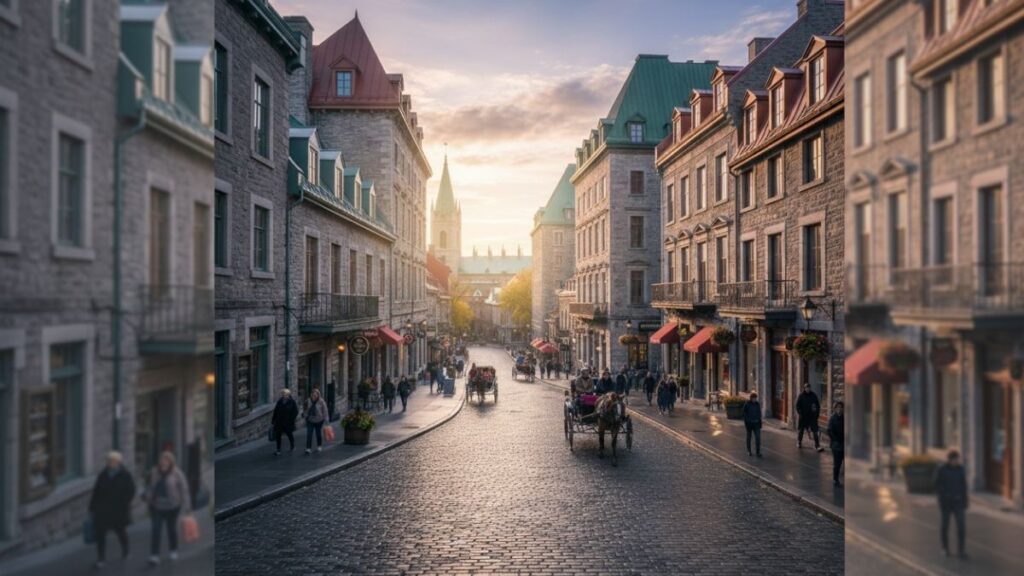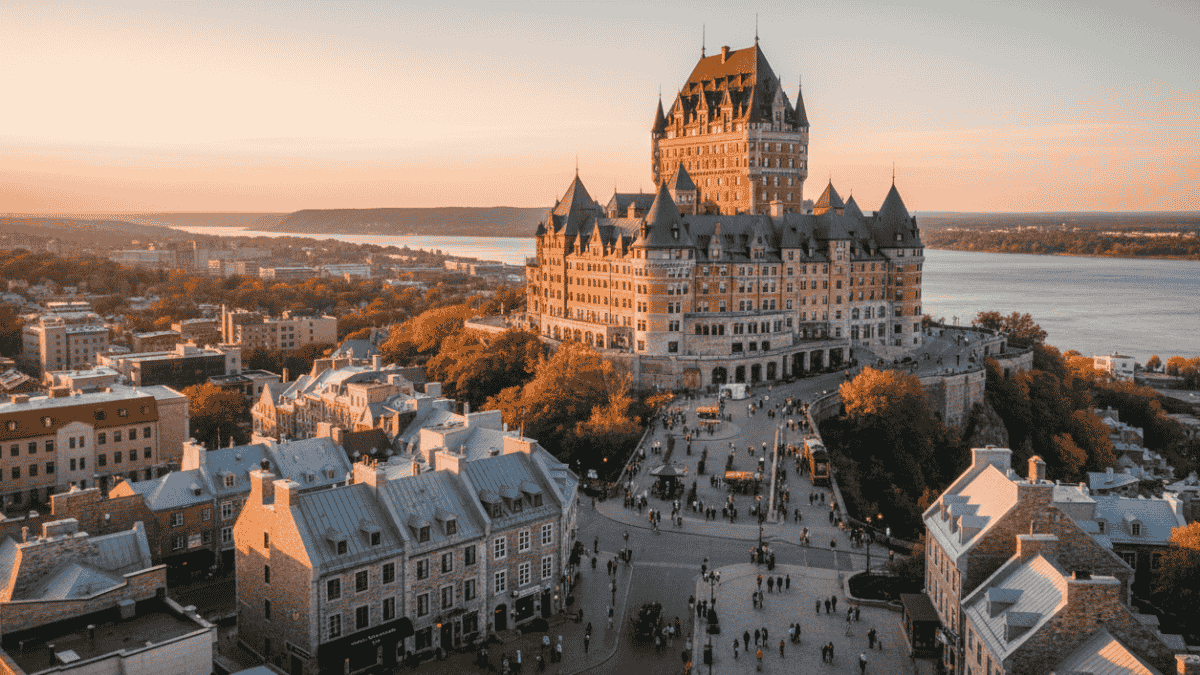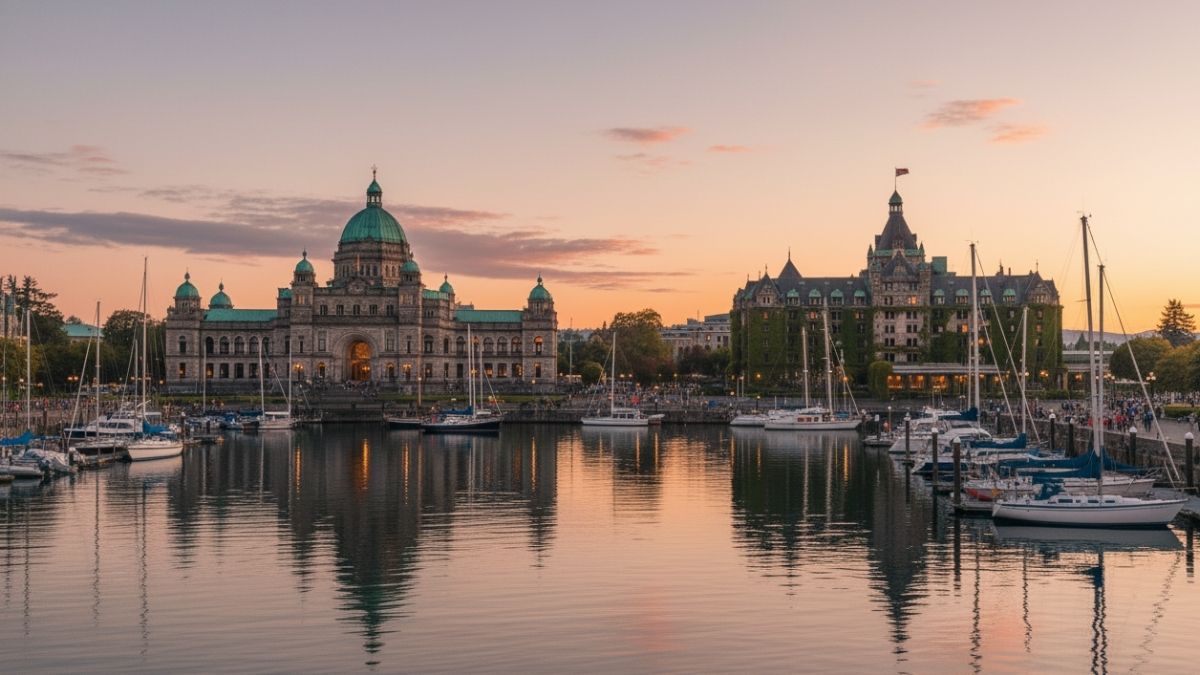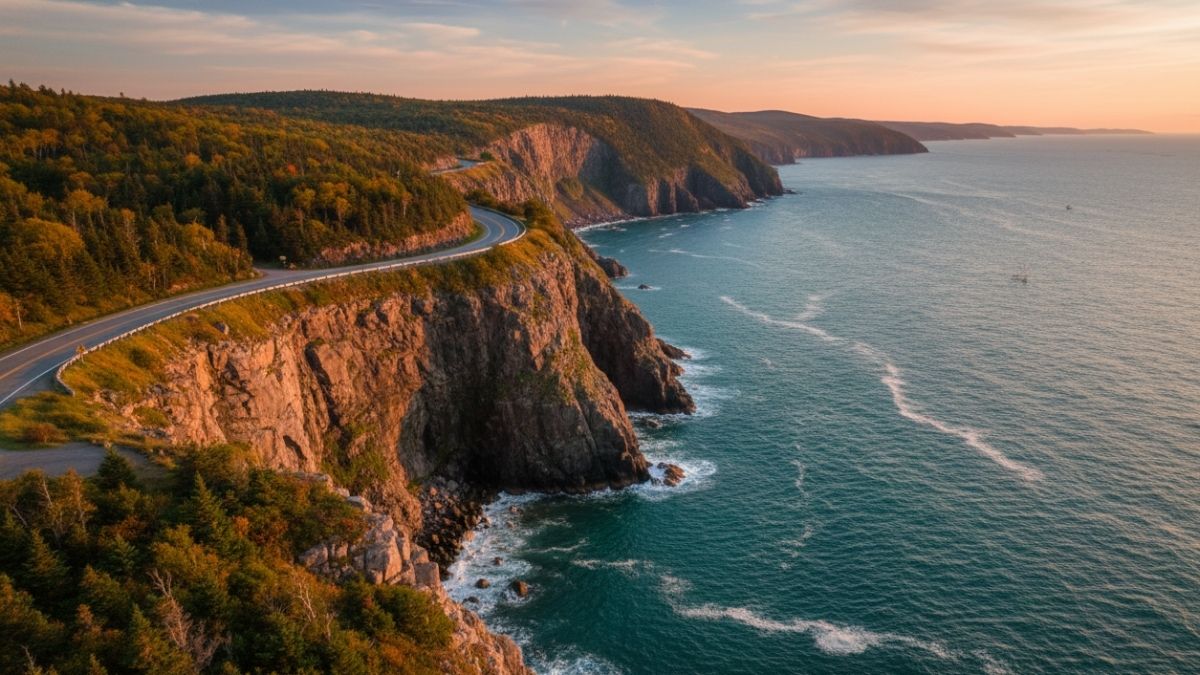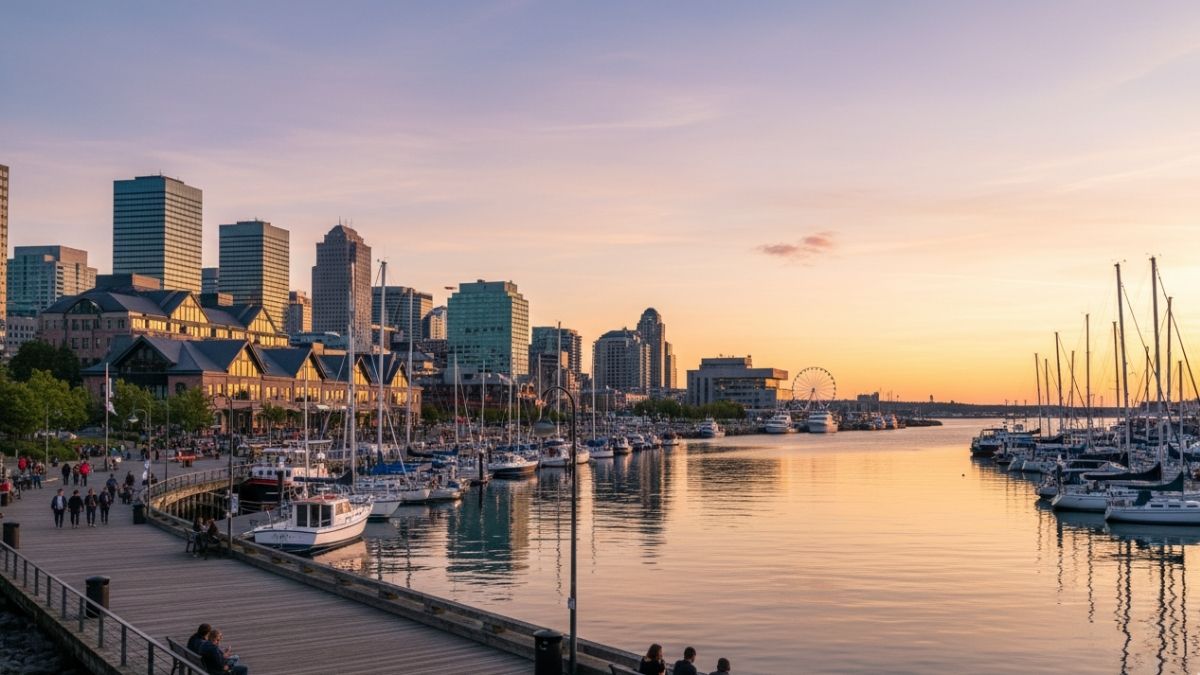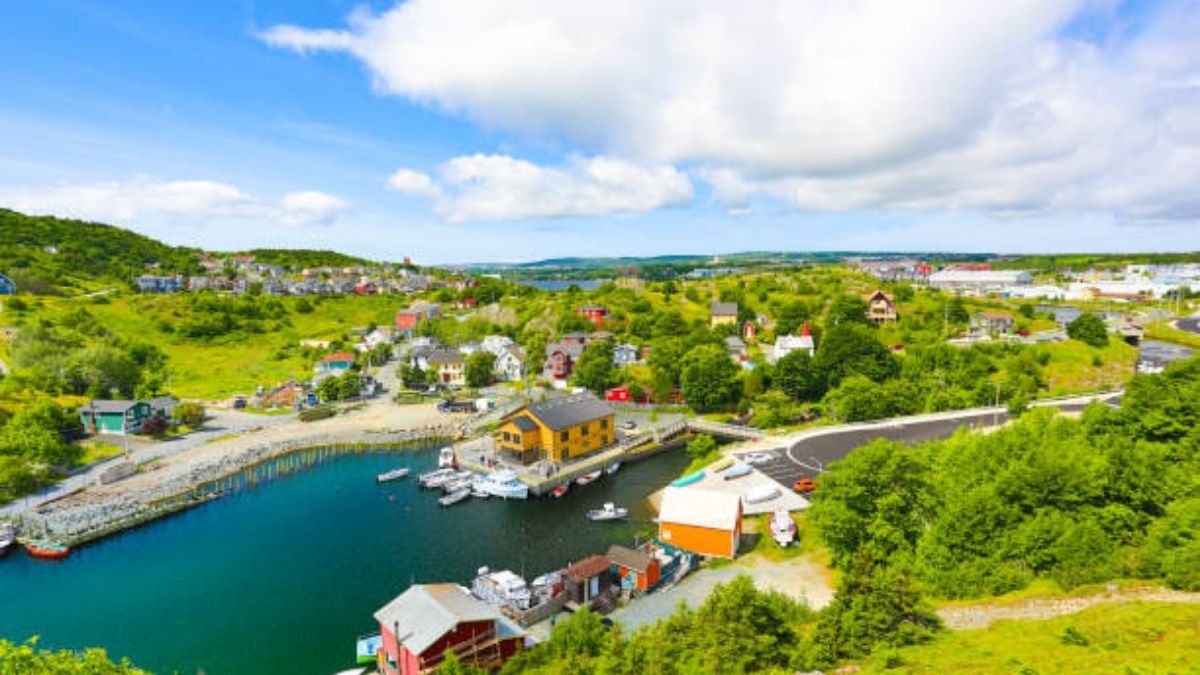Montreal, the beating heart of French Canada — a city where cobblestone streets meet modern skylines, where the smell of butter croissants mingles with that of sizzling poutine, and where every corner hums you with history, creativity, and soul.
If you’re planning your next great escape and wondering, is Montreal worth visiting? — the answer is absolutely yes. This is the kind of city that pulls you in slowly and makes you fall in love.
From the romantic charm of Old Montreal to the energy of downtown nightlife, Montreal is the perfect blend of Europe and North America — a destination that’s cultured, lively, and beautifully unique.
If you’re searching for a free travel guide to Montreal, you’re in luck. We’ve created one for travelers who want to explore smarter, deeper, and with more confidence. Inside, you’ll find local secrets, transit hacks, hidden food spots, and itinerary ideas that go beyond what the usual blogs mention.
It’s completely free to download, easy to read, and designed to make your visit effortless. Grab your FREE Montreal Travel Guide eBook today.
If you prefer something you can flip through while relaxing at a café or on your hotel balcony, you can also order the paperback edition on Amazon or Lulu Bookstore.
Simply enter your name and email below to get instant access to your free download.
Planning your next Canadian adventure just got easier with WorldTourGuide. And while you’re at it, don’t miss our Traveler’s Toolkit — trusted by explorers in our travel community to plan smarter, pack lighter, and travel better. You’ll thank yourself later for making this choice!
The Geography and Cultural Landscape of Montreal
Montreal is more than just another city on the map — it’s an island city sitting in the middle of the St. Lawrence River. Its geography alone gives it a rhythm that’s unlike anywhere else in Canada. The island holds 19 boroughs, each bursting with its own culture, flavor, and story.
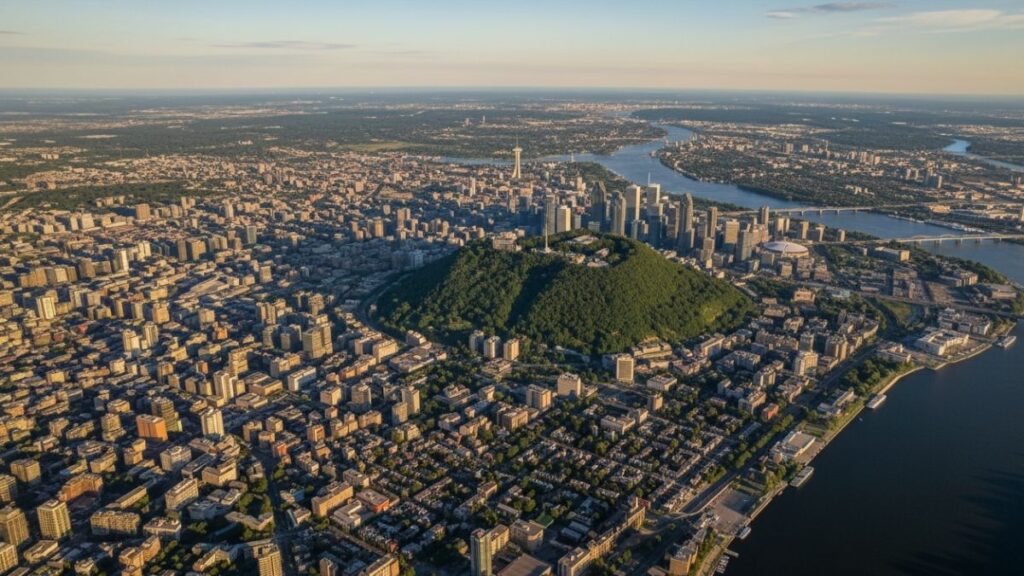
At the city’s heart stands Mount Royal — the mountain that inspired Montreal’s name. From its slopes, you can look down on shimmering skylines, green parks, and a sea of rooftops that stretch toward the river. This mountain isn’t just a landmark — it’s a compass, a sanctuary, and the soul of the city.
The neighborhoods around Mount Royal are as diverse as the people who live there. Old Montreal (Vieux-Montréal) is where you’ll find cobblestone streets, horse-drawn carriages, and historic architecture straight out of 18th-century France. Just beyond lies Plateau Mont-Royal, full of indie cafés, murals, and that laid-back “local” feel.
You’ll also find Mile End, the city’s creative hub, known for its bagels, thrift stores, and music scene. Then there’s Little Italy, Griffintown, and The Village — each offering its own energy, its own version of Montreal’s heartbeat.
French is the city’s dominant language, but English is widely spoken. Most Montrealers easily switch between the two — but start your conversations with a friendly “Bonjour,” and you’ll instantly win hearts.
What makes Montreal stand out isn’t just its architecture or its language — it’s its diversity. You’ll meet people with roots in Haiti, Portugal, Vietnam, Lebanon, and dozens of other countries, all calling this island home. The result is a city that feels global yet deeply local — a place where a jazz festival can sit next to a street fair selling shawarma and maple syrup on the same weekend.
For official visitor resources, check out Tourisme Montréal’s visitor info.
When to Visit: Montreal Through the Seasons
No matter when you come here, Montreal offers something unforgettable. But each season brings its own personality — its own story to tell.
Spring (April–June)
When winter melts away, the city bursts into color. Tulips bloom along the boulevards, terraces reopen, and festivals start rolling in. Spring is perfect for exploring without the summer crowds. Prices are lower, the air is crisp, and everything feels fresh.
Summer (June–August)
Summer is Montreal at full speed. The streets are alive with festivals, food trucks, and outdoor concerts. The Montreal International Jazz Festival — the largest of its kind in the world — fills downtown with music and life. You’ll also find Just for Laughs, Osheaga, and weekly fireworks over the Old Port. Expect long days, warm nights, and endless energy.
Fall (September–November)
Autumn transforms the city into a painting. The trees on Mount Royal turn gold and crimson, cafés fill with pumpkin-spiced everything, and the pace slows down just enough to breathe it all in. It’s the perfect time for quiet walks, photography, and cozy evenings.
Winter (December–March)
Winter in Montreal is cold — there’s no denying that. But it’s also magical. Snow blankets the city, lights twinkle across Old Montreal, and festivals like Montréal en Lumière and Igloofest bring the streets to life. Locals embrace the chill with open arms — skating, snowshoeing, or heading into the underground city when it gets too frosty.
So when’s the best time to go? If you crave energy — go in summer. If you love beauty and calm — choose fall. If you want festive snow and cozy nights — winter is your wonderland.
And for budget travelers, spring offers the best balance of value and comfort.
How to Get to Montreal
Whether you’re coming from across Canada, the U.S., or abroad, Montreal is easy to reach.
By Air:
You’ll fly into Montréal–Trudeau International Airport (YUL), about 20 minutes from downtown. Major airlines like Air Canada, Delta, and Air France connect Montreal with the world.
Getting downtown from the airport:
Taxi/Uber: $40–$50 CAD to downtown747 Express
Bus: $11 CAD — runs 24/7 and stops in central Montreal
Car rental: Great for side trips but unnecessary for the city itself
By Train:
VIA Rail Canada runs frequent services from Toronto, Ottawa, and Quebec City. The ride is scenic, comfortable, and drops you right in the heart of downtown at Gare Centrale.
By Road:
If you’re driving, major highways like Autoroute 20 and 40 lead directly to the island. From Toronto, it’s about 5–6 hours; from Quebec City, just 3.
Be prepared for assertive drivers and French street signs — but don’t worry, “Rue” means street, and “Sortie” means exit.
By Bus:
FlixBus and Orléans Express offer affordable routes from nearby cities. The main terminal, Gare d’autocars de Montréal, connects directly to the metro.
Visit the official City of Montréal site for transit, city services, and local maps.
Old Montreal & The Old Port
If you only have one day in Montreal, spend it here. Old Montreal is the city’s crown jewel — a living postcard filled with cobblestone streets, horse-drawn carriages, and history on every corner.
Start at Place Jacques-Cartier, a vibrant square where street performers, artists, and patio cafés create an atmosphere that feels straight out of Europe.
A short walk away stands the Notre-Dame Basilica, a Gothic masterpiece with deep blue ceilings, golden stars, and glowing stained glass. Don’t miss the AURA light show at night — it turns the church into a living canvas of light and sound.
Stroll along Rue Saint-Paul, Montreal’s oldest street, where 19th-century buildings now host art galleries, boutiques, and bistros. Follow it to the Bonsecours Market, a silver-domed gem full of local crafts and artisan treasures.
Then head to the Old Port, where the St. Lawrence River sparkles against the skyline. Here, you can:
- Ride the Montreal Observation Wheel (La Grande Roue) for breathtaking city views.
- Zipline across the waterfront.
- Relax at Clock Tower Beach in summer.
- Skate or sip hot chocolate in winter.
The Old Port is Montreal’s year-round playground — festive in summer, glowing in winter.
N.B.: If you organize your trip early and pack smart using our recommended travel gear essentials and trusted travel partners below, you’ll skip the “I wish I knew” stress. From booking flights to finding the best travel deals, these are the gears that make every journey smoother — and save you money while you’re at it.
Mount Royal Park & Scenic Lookouts
No trip to Montreal is complete without climbing Mount Royal — the green heart of the city. Designed by Frederick Law Olmsted, the same landscape architect behind New York’s Central Park, this urban mountain is a masterpiece.
The Kondiaronk Belvedere lookout offers the best panoramic view of Montreal. Go at sunrise for peace, or sunset for drama — either way, it’s unforgettable. Behind the lookout sits the Chalet du Mont-Royal, perfect for warming up or taking photos.
Wander deeper and you’ll find:
- Beaver Lake (Lac aux Castors) – great for skating in winter or picnicking in summer.
- The Cross of Mount Royal – an illuminated city landmark first erected in 1643.
- Camilien-Houde Lookout – a quieter spot loved by locals.
Mount Royal changes with every season — lush in summer, fiery in fall, sparkling white in winter. It’s where locals hike, drum, skate, and breathe.
Cultural Landmarks & Museums
Montreal is a city of art, ideas, and emotion. Here are some must-see cultural stops:
Notre-Dame Basilica — A masterpiece of Gothic Revival architecture and one of Canada’s most beautiful churches.

Saint Joseph’s Oratory — Canada’s largest church, perched high above the city. Peaceful, scenic, and deeply spiritual.
Montreal Museum of Fine Arts (MMFA) — Home to over 45,000 works spanning centuries and styles.
Pointe-à-Callière Museum — Built on the city’s original settlement site, it takes you underground into Montreal’s birth story.
McCord Stewart Museum — A celebration of Montreal’s social history, Indigenous culture, and creativity.
Habitat 67 — An architectural icon on the waterfront, blending art and urban innovation.
Each of these places reveals a different layer of Montreal’s personality — sacred, modern, historic, and visionary.
For a full cultural guide to Montréal and its local experiences, see the Québec Vacances Montréal travel guide.
Best Areas to Stay in Montreal
Montreal’s neighborhoods offer something for everyone:
Old Montreal — Romantic and historic, perfect for couples.
Downtown (Ville-Marie) — Central, modern, close to everything.
Plateau Mont-Royal — Bohemian, colorful, and full of great cafés.
Mile End — Trendy, creative, and home to world-famous bagels.
Little Italy — Relaxed, food-centric, and authentic.
The Village — Lively nightlife and inclusive atmosphere.
No matter where you stay, the city’s metro and bus system make exploring easy.
Laws Tourists Should Know
Montreal is easygoing, but it has clear rules:
- Drinking: Allowed in parks only with food. No open containers on streets. Legal age: 18.
- Cannabis: Legal for adults 21+, but restricted in public areas.
- Smoking: Banned near doors, patios, and transit stops.
- Driving: Blood alcohol limit is 0.08. New drivers — zero tolerance.
- Jaywalking: Technically illegal, though rarely enforced.
Respect the rules and you’ll fit right in.
Safety Tips for a Smooth Trip
Montreal is one of North America’s safest cities, but awareness is key.
- Keep valuables close in crowded areas like Old Montreal or metro stations.
- Use official taxis or ride-share apps at night.
- In winter, watch for icy sidewalks.
- For emergencies, dial 911 — English-speaking operators are available.
The city’s metro is safe, clean, and efficient — your best friend for exploring.
Tipping, Taxes, and Payment Practices
- Tipping: 15–20% in restaurants and bars.
- Taxes: About 15% added to most purchases (GST + QST).
- Currency: Canadian Dollars (CAD).
- Cards: Widely accepted, including tap-to-pay and Apple Pay.
Prices on menus usually exclude tax, so plan a little extra when budgeting.
Before we wrap up this travel guide, here’s something truly exciting you won’t want to miss! Our travel media agency, WorldTourGuide, has officially launched a Sponsored Trip Program — a one-of-a-kind opportunity where our most dedicated readers and fans, like you, can earn the chance to explore their dream destination.
Imagine yourself standing beneath Montreal’s skyline at sunset, savoring the city’s energy, and knowing your journey began with WorldTourGuide.
If you’re ready to see where this adventure could take you, click here to learn how the program works and discover how you can be part of this purpose-driven travel experience.
Final Thoughts: Why Montreal Deserves Your Visit
Montreal is more than a destination — it’s a mood, a melody, and a way of life.

It’s morning espresso in a café that’s older than your grandparents. It’s jazz echoing through narrow streets on a summer night. It’s the crunch of snow under your boots in Old Montreal when the lights shimmer on the river.
Whether you come for a weekend or a week, you’ll leave feeling like you’ve lived something real — something timeless.
So pack your bags, learn a few French phrases, and let this island city show you what it means to live with rhythm, warmth, and heart. Montreal is waiting — and it’s ready to surprise you.
And that brings our Montreal journey to a beautiful close! I’m wishing you safe travels and unforgettable moments as you stroll through cobblestone streets, sip espresso on sunlit terraces, and feel the rhythm of one of Canada’s most vibrant cities.
📘 Don’t forget your FREE Montreal Travel Guide eBook — if you missed it earlier, simply enter your name and email below to get instant access.
You’ll also receive future updates, insider travel tips, and exclusive offers from WorldTourGuide to help you plan smarter, explore deeper, and travel better.
So go ahead — pack your bags, charge your camera, and let Montreal’s charm, cuisine, and creativity sweep you off your feet. The city is waiting, and your adventure starts now!
